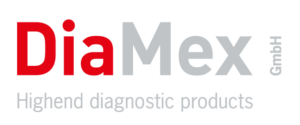Watch again the first part of three in our webinar series; Quality Control in the Serology Laboratory: Why is Quality Control for serology different to the norm?
15th Feb, 2022

Missed the webinar? Don’t worry! You can watch it right here. To make sure you don’t miss future webinars, simply add your email to our newsletter sign up form at the very bottom of this page.
This webinar was part 1 of a 3 series webinar.
Click here to register for part 2 now.
“Thank you for a very useful, interesting presentation. Looking forward to the next webinar.”
“Thanks, very insightful webinar.”
“Thank you, really useful and informative presentation.”

Will all or which West Gard rules will be applicable in serology quality control scope?
Because reagent lot changes introduce significant variation, almost all of the Westgard rules will fail even in infectious disease serology. Westgard rules are based on the assumption that the range established will encompass all future results; but this is not the case due to reagent lot changes. Refer to the paper below.
Dimech W, Karakaltsas M, Vincini GA. Comparison of four methods of establishing control limits for monitoring quality controls in infectious disease serology testing. Clin Chem Lab Med. 2018 Oct 25;56(11):1970-1978.
Will all or which West Gard rules will be applicable in serology quality control scope?
See previous answer.
Thanks for this great presentation. I’d like to know your standpoint on “matrix effects” as often seen in the past, especially heterogenous assays in ID are streamlined for high performance in human samples. due to e.g. shortage of material or difficulties in sourcing, control samples are often diluted (my observation) which leads to not-so-much-human samples.
When choosing a QC sample, it is preferable that the QC is comprised of the same matrix as that found in the patient sample. Some QC manufacturers do use bovine serum albumin or buffer to dilute the sample down (makes it go further and is therefore cheaper to produce), but this may impact on the test results. Note that all QC samples are diluted samples. DiaMex, the manufacturer of Optitrol QCs always use true human plasma to dilute the QC to the appropriate level.
For infectious disease assays- Is westgard Rule is applicable especially for HIV, HbsAg and Anti HCV
See previous answer.
How MU reports are delivered? Can MU be generated per lab/ instrument/site, etc…
In EDCNet MU reports can be automatically created by the laboratory for particular assays and/or instruments. The laboratory can select the period of time to be investigated and select the appropriate settings to produce the report. The report is a one page pdf which is able to be printed and is saved on EDCNet for future reference. NRL has developed a formula that includes both imprecision and bias. Pls refer to this paper:
Dimech W, Francis B, Kox J and Roberts G. Calculating Uncertainty of Measurement for Serology Assays by Use of Precision and Bias. Clin Chem. 2006 52:3.
Brief on Lot-To- Lot variation in serology QC and acceptable variation in %
Very good question. This is an area that NRL is doing a lot of work but is yet to publish Each assay has its inherent imprecision. For example, I can say that the Ortho VITROS has very small imprecision (eg <5% CV) whereas other platforms are larger (<10% CV). Manual microtire plate EIAs have CVs of up to 20%. We know that anti-HCV assays have greater CVs than say HIV assays. Knowing the CV of your assay is important metric. We are mapping these out and hope to add these rules to EDCNet in the future.
How does one access EDCNet to use with our QConnect QCs?
EDCNet is free to any users of the DiaMex Optitrol QCs. Please talk with the AB Scientific staff and they will direct you on how to set up an account. NRL staff are always willing to organise a Teams or Zoom meeting to provide training to your and your staff, so that you get the best benefit from the system
Is anything wrong with using pooled patient samples for QC? We do this.
QC samples must be homogeneous and stable and should not contribute significantly to any variation. QC manufacturers must undertake comprehensive studies on their QC samples when they are registered as IVDs and must maintain ongoing assessment of the performance of the QC samples. With 20 years experience in supporting QC manufacturers, I can state that the development and manufacture of good QCs is not easy and even manufacturers experience issues. So, for a lab to use pooled patient samples, it is quite possible that they will experience issues due to the QC sample itself. Obviously, if there are no alternatives then pooled patient samples are better than nothing. But I would suggest that it would be safer to use a commercial, optimised QC.
Is any difference in results in-house made controls and commercial available
Please share experience
Please see previous answer.
Has anyone with this system had this approach assessed by a UKAS assessment?
My colleague Joe Vincini, who used to work in the UK for many year, has discussed this system with UKAS and talks are on-going. You may have noticed that the most recent version of the UK Guidelines for EQAS and QC for infectious diseases now does reference QConnect.
What is principle of rejecting or accepting control datal? is it the same as the rules implemented by Westgrad rules
The beauty of QConnect limits is that they are a single range and stable. For example, for the Abbott Architect anti-HCV assay, the QConnect range for Optitrol Blue is 2.1 – 3.6 S/Co. SO any results falling with in this range for this QC/assay combination is acceptable. Results outside this range should be investigated.
Do you think optitrol controls can be used instead of the control provided by the manufacturers?
No. Manufacturer’s controls (kit controls) should be used. They serve the purpose of validating the day’s run and are part of the specifications of the manufacturer. To not use the kit controls would likely mean that you are using the assay “off licence”. The external QCs (Optitrol) serve a different purpose. They are used to monitor the performance of the assay over a long period of time. This way we can detect any unexpected variation, which kit controls will not detect. So both the kit controls and the external controls should be tested.
Is GRUBB’S Test for QC outlier is applicable for infectious disease controls – HIV, HbsAg, HCV?
Grubb test is a test for normality. All it will tell you is whether or not the data set you are investigating is normally distributed or not. It does not give you an indication whether the results are in control of not. So, it serves a purpose, but not one of monitoring a test system.
Thank you for the useful presentation. SDs can be derived on bigger data sets to take account of reagent lot to lot variation, ideally at least 6 months’ worth of data, this is our current practice.
Agreed. However, it must be pointed out that this approach is not supported in any QC guidelines, in particular the UK guidelines or CLSI. Having said that, I do agree with the concept and in a basic way, it is somewhat similar to the QConnect approach. Where our approach is different is that we can also include bias by comparing the mean of your laboratory results with the mean of your peers. This give you far more power when investigating unexpected changes in QC results.
Great presentation thanks- we review our uncertainty of measurement every 6 months
Thanks! A review of MU every six months is good. When you have a process like EDCNet were the reports can be generated automatically, it makes review much easier.
In ID panel especially -ve control gave huge variation (one day gave 0.02 and another day 0.2 COI), Is it acceptable? (off course both are -ve) these results will impact huge on CV%? how we will consider.
When you deal with very small numbers, even a small variation will look significant. Given that 0.2 COI is still very negative, I would not heed the difference. NRL does not advocate running negative QC samples for serology for this reason.
What would you recommend if no commercial QC material is available? This is a particular challenge for reference labs. Would patient pooled sample suffice?
As mentioned above, if there are no commercial options, pooled patient samples is about the only option. It is better to use PPS than nothing at all. Just be aware of the issues about homogeneity and stability. It is best that you perform validation on these to characteristics to be sure that the QC sample reactivity does not change over time.
For more information on Diamex Serology Controls visit our dedicated page here.
For more information on the NRL please click here.
For a personal demonstration of the free to use EDCNet software please contact us here.